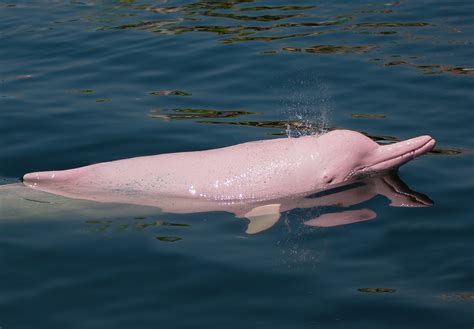- River dolphins: Amazon boto populations are declining rapidly
- Science Sound(E)scapes: Amazon Pink River Dolphins
- pink river dolphin can change its colour
- Fishermen are helping scientists research pink river dolphins
- What’s Killing the Pink River Dolphin?
Download: The pink river dolphin can change
Size: 21.53 MB
River dolphins: Amazon boto populations are declining rapidly
An Amazon river dolphin, also known as a boto, in Rio Negro, Brazil Sylvain Cordier/Nature Picture Library/Alamy Strange, pink, small-eyed freshwater dolphins glide through today’s turbid waters of the Amazon river basin. But they are fast approaching extinction. The Amazon river dolphin ( Inia geoffrensis), or “boto”, is one of the few remaining dolphins on the planet that are restricted to freshwater, with two other superficially similar species in south Asia.
Science Sound(E)scapes: Amazon Pink River Dolphins
This is Scientific American’s 60-Second Science. I’m Jeff DelViscio. Today we’re going to do something completely different: We’re going to offer you a break in the pandemic and politics by taking you on a three-part sound journey to the Amazon. We will eavesdrop on some incredible creatures in the world’s largest rain forest. Think of it as a soundscape turned into a sound escape. Today episode one: into the river. Our guide for this audio trip is Tim Weaver. Tim is a professor of emergent digital practices and a multimedia and sound artist at the University of Denver. Thanks for joining us, Tim. “Thanks, Jeff, for that intro. We’re going to be listening to some far-reaching soundscape ecologies today from research that I’ve been conducting off of the main stem of the Amazon on the Peruvian border with Brazil.” Tim, could we start out by talking a little bit about what you do? Tell us about soundscape ecology. “One way of looking at ecological stability, or what’s happening in the dynamics of ecologies, is by looking at the sound of spaces, or the acoustic ecology. It’s a newer area, in terms of looking at an exchange of information in ecologies and diversity. And with recording technology, there’s amazing ways to look at this. And so we’re looking at everything from the resonances of forests—so how does a forest that has been cut sound? And how does sound reflected into a native forest that still has its native, somewhat intact, primary forest—communication between speci...
pink river dolphin can change its colour
People Also Read: How to use The ______ pink river dolphin can change its color and also has the The Amazon pink river dolphin can change its color and also has the largest body and brain of any freshwater dolphin. The Amazon pink river dolphins are born gray in colour but they slowly turn pink with age.
Fishermen are helping scientists research pink river dolphins
License and Republishing World Economic Forum articles may be republished in accordance with the Creative Commons Attribution-NonCommercial-NoDerivatives 4.0 International Public License, and in accordance with our Terms of Use. The views expressed in this article are those of the author alone and not the World Economic Forum.
What’s Killing the Pink River Dolphin?
AT 4 A.M., BEFORE THE SUN STARTED TO RISE over the Amazon rainforest, Veronica Iriarte stepped into her aluminum skiff and started the motor, battling unsuccessfully with a swarm of hungry mosquitoes. She stopped to pick up her assistant, a local named João de Assunção Pontes who lived on the other side of the river, before beginning the 60-kilometer journey into the heart of the jungle. Their destination was a large wooden crate, partially submerged in the water, located near one of the native villages that pepper the riverbanks. She had noted the location of the box the day before. She suspected it contained the corpse of a pink river dolphin, a protected species in Brazil. They approached the box quietly, hoping not to disturb the still-sleeping fisherman. There were no signs of any dolphins in the crate. Instead, the box was writhing with piracatinga, a carnivorous catfish drawn to the smell of decaying flesh. It’s known in Portuguese as urubu d’água: “water vulture.” If there had once been a dolphin, it was now inside the stomachs of these wriggling fish. That left Iriarte with only one option. She drew the skiff alongside the crate, grabbed one of the bulging creatures, and began to massage its stomach. In less than a second, it puked up its latest meal. Iriarte gathered the vomit and stored it in ethanol — an undignified resting place for what could be the remains of one of the Amazon’s most mysterious and enchanting creatures. DURING THE THREE YEARS she spent as an...

